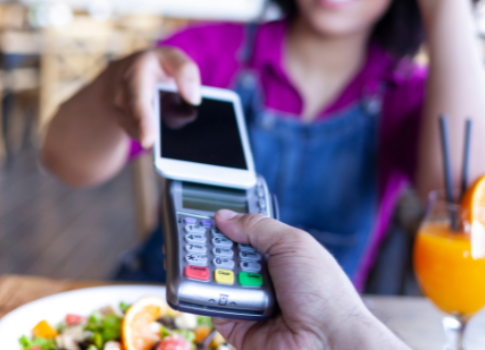
Running a successful restaurant requires building genuine connections with customers—whether it’s the chef remembering a regular’s favorite wine or a server asking about a customer’s family. These personal touches are key to a memorable dining experience. However, when it comes to marketing, many restaurant owners find it difficult to balance authentic customer engagement with the demands of managing a business. Traditional restaurant marketing can be time-consuming, often stretching restaurant owners thin and taking time away from what really matters: creating a great dining experience.
Marco, the owner of a bustling Italian restaurant in San Diego, was caught in this dilemma. He spent years personally responding to reviews, creating content, and posting on social media, all while juggling the day-to-day demands of running a restaurant. “I was drowning,” he admits. But once he integrated automation tools, his marketing reach grew significantly, and he reclaimed valuable time. His customers, surprisingly, felt even more connected to his restaurant.
The key takeaway? Automation in restaurant marketing doesn’t have to sacrifice personal touch; in fact, it can amplify it. With the right automation strategies, you can maintain genuine relationships with your customers while also scaling your marketing efforts. Let’s explore five ways to automate your restaurant marketing effectively.
1. Email Marketing Automation: Turning One-Time Visitors Into Regulars
Gone are the days when email marketing was about sending the same message to everyone on your list. Today, email automation lets restaurants send tailored messages based on a customer’s preferences and behaviors, making your marketing feel personal without requiring endless hours of manual effort.
Jennifer, a marketing director for a regional restaurant group, saw a 34% increase in repeat visits by implementing behavior-triggered email campaigns. “We started sending different emails to brunch-goers versus happy hour regulars, and each message felt more personal,” she says.
By segmenting your customers based on factors like visit frequency, menu preferences, and special occasions, you can send highly personalized emails that cater to their specific interests. A vegetarian might get updates on new plant-based options, while someone who frequently books large tables might receive information on private dining events.
The best systems even track which emails customers engage with, refining future communications accordingly. This makes your marketing feel tailored to individual customers, all while saving you time.
2. Social Media Scheduling: Stay Consistent Without the Daily Hassle
Maintaining an active social media presence can be time-consuming, especially when you’re trying to balance marketing with daily restaurant operations. Social media automation allows you to plan and schedule posts ahead of time, ensuring your restaurant’s voice remains consistent without requiring daily attention.
Sophia, the owner of a popular taco restaurant in Austin, used to spend over an hour each day managing social media. “Now, I spend three hours every Monday planning the entire week’s content, and I’ve actually seen better engagement,” she says.
By automating the scheduling of your posts, you ensure consistent messaging across platforms without the pressure of daily posting. Many tools even suggest optimal posting times based on audience activity, ensuring your posts reach the right people at the right time.
Automation also allows for the collection of user-generated content. Tools can monitor social media mentions and collect positive reviews and images, which can then be reshared to further engage your audience. The key is maintaining your restaurant’s personality while automating the repetitive tasks.
3. Review Management: Turn Feedback Into Marketing Gold
Online reviews are a crucial aspect of restaurant marketing, but monitoring and responding to them can be time-consuming. Automated review management tools can collect feedback from multiple platforms (like Google and Yelp) into a single dashboard, allowing you to manage responses efficiently.
Chef David Wong from Harbor Light, a seafood restaurant, increased his review response rate from 40% to 97% after implementing an automated system. “The system flags negative reviews for immediate attention, and positive reviews get customized, thoughtful replies,” he explains.
These tools not only help streamline responses but also categorize reviews based on themes, giving you insights into operational areas that need improvement. You can create templates for positive responses, saving time while keeping a personalized touch. For negative reviews, the system ensures your initial response is quick and empathetic, allowing you to address issues privately.
Additionally, you can encourage satisfied customers to leave reviews automatically after their meal, turning great feedback into valuable social proof for your restaurant.
4. Loyalty Program Automation: Reward Your Best Customers Without the Extra Work
Loyalty programs are proven to boost repeat visits, but managing them manually can be a hassle. Automated loyalty systems track customer spending and behavior, delivering personalized rewards without requiring you to lift a finger.
James, the general manager of a neighborhood bistro in Atlanta, saw a 41% increase in repeat visits after implementing an automated loyalty program. “The system tracks customer preferences and automatically sends rewards like discounts or exclusive event invitations based on their habits,” he says.
Automated loyalty systems can also create tiered reward structures that make customers feel valued at every stage of their journey, offering personalized perks based on their spending history. This approach not only increases customer retention but also improves the overall guest experience, all while reducing administrative work for your staff.
5. Personalized Follow-Ups: Stay Connected After the Meal
One of the most effective but often overlooked marketing strategies is following up with customers after their visit. Automated post-dining communication allows you to stay in touch with guests and encourage return visits without overwhelming them with generic messages.
Carmen Rodriguez, owner of a tasting-menu restaurant in Philadelphia, sends a personalized thank-you email within 24 hours of each guest’s visit. “We use customer data from our reservation system to craft messages that reference their specific experience,” she explains. “It feels personal, not like a mass email.”
By tracking customer details like their meal preferences or special occasion notes, you can send tailored messages that reflect the unique aspects of their visit. For example, a guest celebrating an anniversary might receive a special invitation to return next year. This thoughtful approach, delivered through automation, helps build a deeper connection with your customers and encourages loyalty.
Bringing It All Together: Building Your Restaurant Marketing Automation System
When combined, these five strategies create a robust marketing ecosystem that runs seamlessly in the background, freeing up your time while keeping customer connections strong. Integrating tools like your POS system, reservation platform, email marketing, and social media ensures that every piece of your marketing is personalized and automated.
Michael, who runs a restaurant group with seven locations, saw a 215% improvement in marketing effectiveness while reducing time spent on marketing by 70%. “Our guests now feel more personally connected than ever,” he says.
Start small with one or two of these strategies, then expand as you see results. Track key metrics, not just in terms of engagement, but also repeat visits, customer retention, and increased sales. As you streamline your marketing processes, you’ll find more time to focus on what you do best—providing exceptional dining experiences.
By integrating automation into your restaurant marketing, you can maintain the personal touch that makes your restaurant special while reaching more customers, driving loyalty, and ultimately growing your business.












